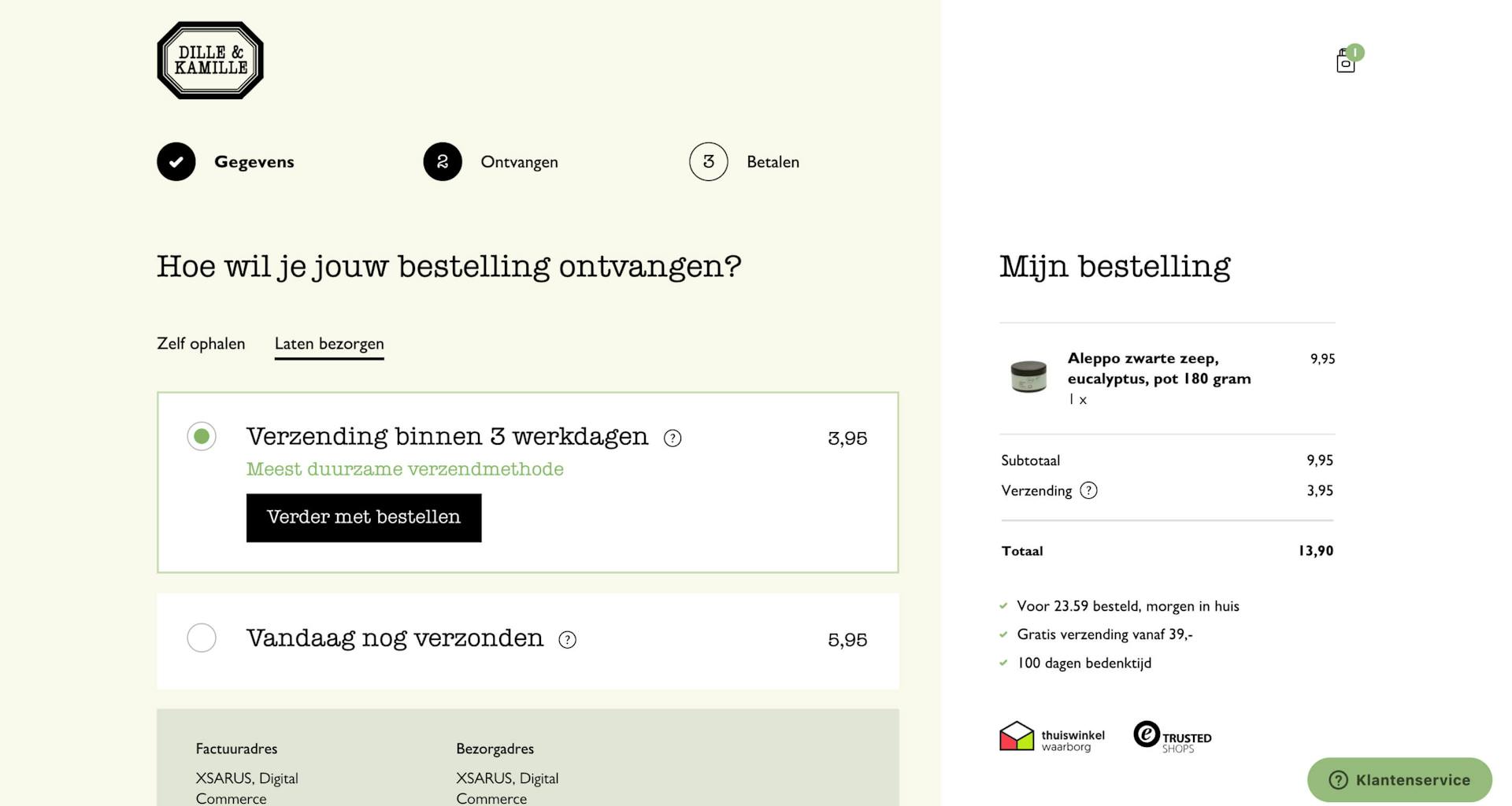Sustainable consumer choices
Sustainability. A hot topic in the rapidly evolving world of e-commerce. Reducing the carbon footprint of online shopping is not only a matter of environmental awareness, but also of business responsibility.
Underlying topics such as the use of sustainable materials, efficient purchasing and ways to reduce returns are currently being discussed frequently. But as an e-commerce organization, you also play a crucial role in encouraging consumers to make more sustainable choices. In this article, you'll read how to guide consumers to make sustainable decisions and what steps you can take to encourage this shift. In this article you'll read, among other things:
- The importance of transparency and good communication about your efforts
- How to encourage sustainable product choices
- What opportunities exist for sustainable delivery options
- How to encourage sustainable options in the checkout
- And why you should take action: the challenge is great, but opportunities abound
Transparency and communication
It all starts with awareness. The Thuiswinkel Sustainability Monitor shows that Dutch consumers value transparency about efforts that organizations make in terms of sustainable production and delivery. To help consumers store sustainably, web shops will have to offer them more information. Where does a product come from? How was it packaged and transported? What impact does the product, and therefore my purchase, have on the world?
Clear communication is essential. Know who your customers are and what is important to them. Explain specifically, clearly and transparently what socially responsible steps your organization is taking and what choices customers themselves can make to be more sustainable. Laws and regulations will also continue to increase. One example is the European "New Consumer Agenda," which imposes a legal obligation on companies to provide consumers with relevant sustainability information.
A great example is provided by our client Dille & Kamille. In addition to open and clear communication about how they have organized their business operations as sustainably as possible, they also launch a sustainability report every year. In the report, they disclose what goals they have set for sustainability and how they plan to improve performance in each category. Curious? Check out Dille & Kamille's report here.
Sustainable product choices
The core of a sustainable e-commerce policy starts with the products themselves. The more sustainable the assortment, the smaller the webshop's carbon footprint. And consumers are increasingly willing to pay more for a sustainable product.
Again, make sure you have clear communication about the ecological impact of the products. Especially if they have a clear sustainability label. Use filters or banners on the webshop to make products that meet certain sustainability criteria stand out. For example, products made from recycled materials. In addition, detailed product descriptions and labels such as "eco-friendly" or "sustainably produced" can contribute to consumer awareness.
Sustainable delivery options
Transport, a major polluting factor in the e-commerce chain, is another area of increasing choice. And with success. Consumers are increasingly choosing an environmentally friendly delivery option. They are willing to wait longer for a package, stay home for a delivery or pick up the purchase at the store or a parcel point.
"Ordered today, delivered tomorrow! It doesn't always have to be that way anymore. One of the most notable sustainable delivery options embraced by consumers is deferred delivery. Where consumers are given the option to choose a longer delivery time in exchange for lower or even no shipping costs. As a business owner, this allows you to bundle deliveries and plan more efficient routes, reducing emissions. An option that benefits both the environment and the consumer's wallet.
Another emerging trend is the use of local storage facilities and green delivery services. Storing products closer to customers shortens delivery time and directly reduces CO2 emissions from long-distance traffic. Using green delivery services, such as electric delivery vehicles or bicycle couriers, further contributes to a sustainable supply chain.
Stimulate sustainability in the check-out
Research by Thuiswinkel.org has shown that by implementing relatively easy changes on the checkout page, you can encourage sustainable options.
One effective way to achieve this is through associations via logos. By placing clearly identifiable sustainability logos on delivery options with low environmental impact, consumers can quickly and intuitively identify the sustainable choice. Another possibility is to check the most sustainable option by default on the check-out page. Finally, using social proof, such as stating "this option is often chosen," can encourage consumers to go for a sustainable delivery option.

Working together on sustainability
There's really no getting around it: sustainability is an increasingly important issue that every e-commerce organization must take action on. The challenge is great, but opportunities abound. The developments call on you as a webshop owner to be transparent about your sustainability efforts and rules. Embrace the possibilities, offer information about the impact of your products on the world and give visitors a choice of environmentally friendly delivery options. By doing so, you can have a significant positive impact on the environment. By actively working on this yourself and putting it on the agenda, you can encourage consumers to make more sustainable choices.

